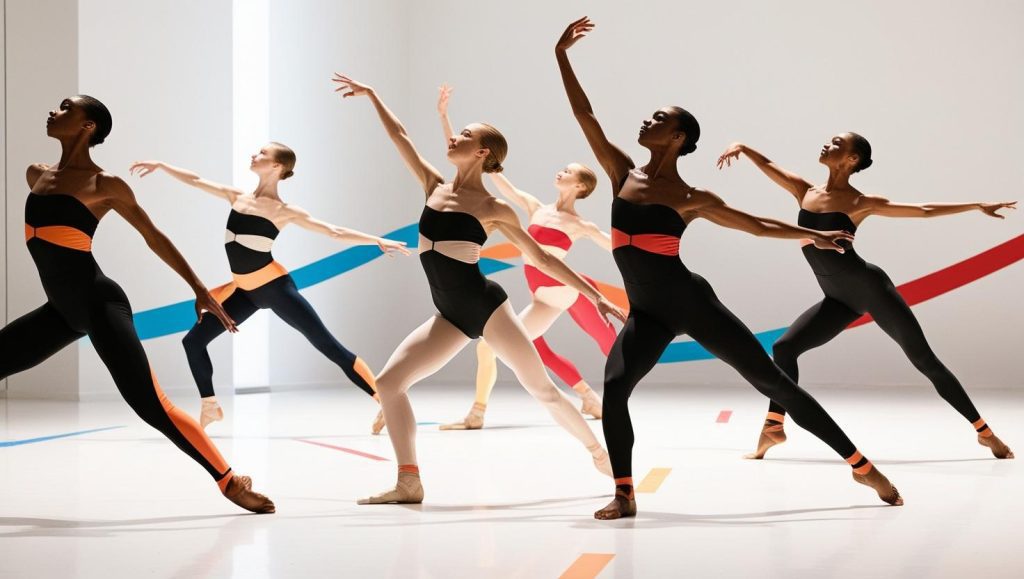Introduction
Modern dance is an expressive and dynamic art form that continues to evolve, blending various styles and techniques. For students studying modern dance, assignments can be challenging as they require both technical knowledge and creative thinking. This blog offers Modern Dance homework help, providing insights, tips, and resources to make your assignments easier to complete.
1. Understanding Modern Dance: An Overview
Modern dance emerged in the early 20th century as a rebellion against the structured forms of classical ballet. Unlike ballet, which follows strict postures and techniques, modern dance is known for its fluidity and freedom of movement. This section will discuss the origins, evolution, and key features of modern dance, laying a strong foundation for your assignments.

- History of Modern Dance: Modern dance started as a counter-movement to ballet, with pioneers such as Martha Graham and Isadora Duncan reshaping the art.
- Characteristics of Modern Dance: Modern dance emphasizes floor work, improvisation, and emotional expression.
Resources:
2. Key Figures in Modern Dance
One of the crucial aspects of studying modern dance is understanding the key figures who have shaped the art form. In this section, we’ll explore the contributions of legendary dancers and choreographers.
- Martha Graham: Often referred to as the “mother of modern dance,” Graham’s revolutionary work paved the way for modern dance.
- Isadora Duncan: Known for her naturalistic approach, Duncan rejected traditional ballet and laid the groundwork for modern dance.
- Merce Cunningham: Cunningham’s experimental style, combining chance and controlled movement, influenced modern dance deeply.
Resources:
3. Techniques and Styles in Modern Dance
Modern dance encompasses a variety of techniques that vary from one choreographer to another. Understanding these techniques is essential when tackling your homework.
- Graham Technique: Focuses on contraction and release, exploring emotional depth.
- Release Technique: Emphasizes relaxation and the use of gravity in movement.
- Limon Technique: A blend of classical ballet and modern dance, focusing on fall and recovery.
- Contact Improvisation: A form of partner dancing that focuses on spontaneous interaction between dancers.
Resources:
- Modern Dance Techniques – Dance Teacher Magazine
- Release Technique Explained – The Dance Store Online
4. Modern Dance in Contemporary Culture
Modern dance continues to influence and shape the world of performance art today. This section discusses how modern dance intersects with popular culture, theatre, film, and contemporary choreography.
- Impact on Theatre and Film: Modern dance has a significant presence in contemporary theatre and film, with choreographers like Twyla Tharp and Bob Fosse shaping Broadway and Hollywood.
- Modern Dance in Social Movements: Dance has also been a powerful tool in social movements, reflecting issues such as racial inequality, gender identity, and freedom of expression.
Resources:
- Twyla Tharp’s Influence on Broadway – The New York Times
- The Role of Dance in Social Movements – Dance History Journal
5. Tips for Writing a Modern Dance Assignment
Writing about modern dance can be challenging if you don’t know where to start. Here are a few tips that will help you structure your homework effectively.
- Research Thoroughly: Use academic journals, dance magazines, and credible online sources to gather information.
- Understand the Terminology: Familiarize yourself with dance vocabulary, as this will help you describe movements and techniques accurately.
- Focus on Personal Expression: Since modern dance is an expressive form, consider how to connect your personal experience with the subject.
Resources:
6. Common Mistakes to Avoid in Modern Dance Homework
To ensure that you submit the best possible work, avoid these common mistakes:
- Over-relying on Summarized Content: Avoid just summarizing sources; instead, synthesize information and add your insights.
- Lack of Structure: A well-organized paper with a clear introduction, body, and conclusion will make your argument stronger.
- Ignoring Visual Elements: If your assignment involves movement or choreography, including sketches or diagrams can make your work stand out.
Resources:
- Common Academic Mistakes to Avoid – Purdue OWL
- Dance Essay Structure Tips – The University of Edinburgh
7. Conclusion
Modern dance is a rich and evolving discipline that combines creativity with technique. Understanding the history, techniques, and prominent figures of modern dance will help you tackle your assignments with confidence. By utilizing the tips and resources provided in this guide, you’ll be well on your way to submitting top-notch work.


